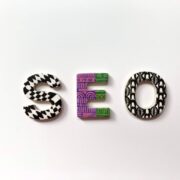How Geofencing Advertising Enhances Customer Engagement
In today’s tech-driven world, businesses are always on the lookout for ways to connect with their target audience. An emerging trend in marketing that is catching on is geofencing advertising. This strategy uses location-based targeting to send personalized content and deals to customers when they’re in a place. In this article, we’ll delve into how geofencing advertising boosts customer engagement and brings advantages to both businesses and consumers.
Understanding Geofencing Advertising:
Let’s understand “What is a geofence?” and geofencing advertising. Geofencing advertising is a marketing approach that sets boundaries around locations using GPS or RFID technology. These boundaries act as a “fence,” triggering actions when people enter or leave the designated area. This tool helps businesses reach out to customers who are close to their stores or locations.
Enhanced Personalization and Relevance:
A major benefit of geofencing advertising is its capacity to provide personalized content to consumers. By utilizing real-time location data, businesses can send messages, offers, or discounts customized for users in the vicinity.
Imagine strolling near a shopping center when your phone buzzes with a notification offering a discount at one of your stores. This tailored message adds value by presenting deals at the moment and place, increasing the likelihood of customer engagement.
Improving Customer Experience:
Geofencing advertising also boosts customer satisfaction by delivering real-time updates on products or services, events, and activities. For instance, retail outlets can alert shoppers about sales or new arrivals in-store.
Moreover, businesses in the hospitality sector can utilize geofencing ads to guide tourists to attractions or offer exclusive deals at nearby eateries. Providing access to details empowers customers to make informed choices while connecting with the brand.
Driving Foot Traffic and Sales:
Through geofencing advertising strategies, businesses can draw customers to their stores. By sending location-specific offers or discounts, they not only grab potential customers’ attention but also motivate them to explore nearby establishments in person.
Once customers step into a store, marked by crossing the geofencing boundary, businesses can enhance their experience further through personalized suggestions or promotions. This personalized approach enhances the chances of making a sale while also enhancing customer satisfaction.
Insights from Marketing Data Analysis:
Geofencing advertising also provides insights into consumer behavior. By analyzing location data, businesses can understand consumer preferences and shopping habits. This data enables companies to refine their marketing strategies, improve conversion rates, and enhance customer interactions over time.
For instance, an apparel store might observe increased foot traffic on weekends compared to weekdays in certain areas. Effectively utilizing this data allows them to adjust their inventory and offer targeted promotions on weekends to maximize sales opportunities.
Integration with Various Marketing Channels:
Geofencing advertising yields the results when combined with marketing channels. By integrating this approach with tactics like social media advertising or email marketing campaigns, businesses create an engaging brand experience for consumers.
For example, incorporating geofencing ads into email campaigns by offering in-store discounts for recipients near locations ensures consistent messaging across different platforms. This integration fosters customer engagement and boosts the likelihood of converting leads into customers.
Effect on Advertising Efficiency and Cost-effectiveness:
Geofencing advertising empowers businesses to optimize their ad campaigns for peak efficiency and cost-effectiveness. By focusing on regions, businesses can target an audience effectively, reducing wasted advertising costs and boosting conversion rates.
For instance, instead of investing in an ad campaign that might not resonate with everyone, businesses can use geofencing to concentrate their efforts on local or regional areas with a higher number of potential customers.
This targeted strategy ensures that ads are viewed by people who are interested in the product or service, allowing companies to manage their budgets efficiently and avoid unnecessary expenses on reaching an irrelevant audience.
Conclusion
To succeed in today’s business world, it’s crucial to embrace methods that connect with consumers. Geofencing advertising improves customer interaction by delivering personalized content when and where it matters most. By utilizing location data, businesses can establish connections with customers while boosting store visits and sales opportunities. Integrating geofencing ads with marketing strategies enables brands to create a customer experience that builds loyalty and drives long-term success. As technology advances, incorporating tactics like geofencing advertising will shape the future of engaging customers.




